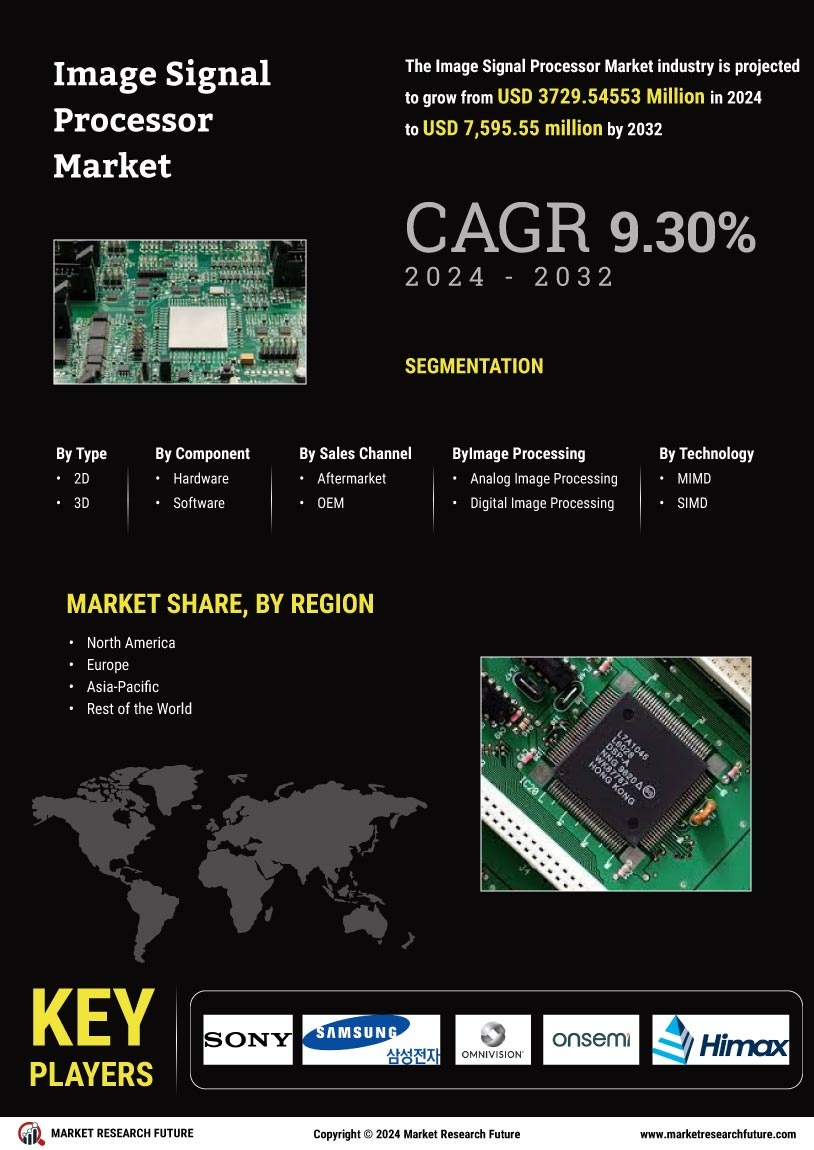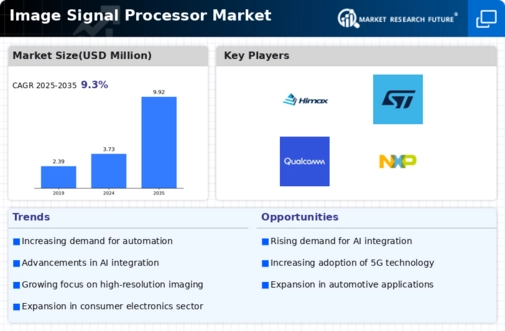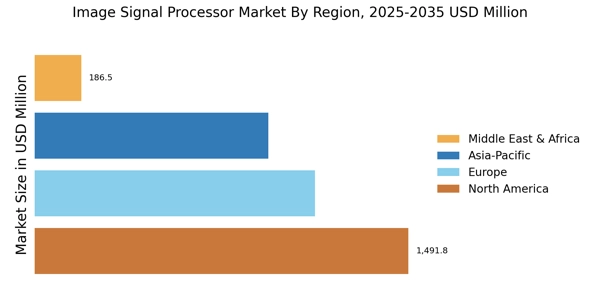Emergence of Smart Devices
The Image Signal Processor Market is witnessing a transformation with the emergence of smart devices. The proliferation of smart home technologies, including smart cameras and IoT devices, has created a demand for efficient image processing solutions. Image signal processors are essential for these devices, as they enable features such as facial recognition, motion detection, and enhanced image quality. The market is projected to grow as manufacturers integrate advanced image processing capabilities into their products to meet consumer expectations for smart functionalities. This trend indicates a shift towards more intelligent and responsive devices, thereby propelling the Image Signal Processor Market into a new era of innovation.
Advancements in Imaging Technologies
The Image Signal Processor Market is experiencing a notable surge due to advancements in imaging technologies. Innovations in sensor technology, such as CMOS sensors, have enhanced image quality and processing speed. This has led to a growing demand for high-performance image signal processors that can handle complex algorithms and deliver superior results. The market is projected to grow at a compound annual growth rate (CAGR) of approximately 10% over the next five years, driven by the need for enhanced imaging capabilities in various applications, including smartphones, cameras, and surveillance systems. As imaging technologies continue to evolve, the Image Signal Processor Market is likely to expand, catering to the increasing requirements for high-resolution and real-time image processing.
Expansion of Automotive Applications
The Image Signal Processor Market is poised for growth due to the expansion of automotive applications. As vehicles become increasingly equipped with advanced driver-assistance systems (ADAS) and autonomous driving technologies, the demand for sophisticated image processing capabilities is on the rise. Image signal processors play a crucial role in processing data from multiple cameras and sensors, enabling features such as lane departure warnings, collision avoidance, and parking assistance. The automotive sector is projected to account for a significant share of the image signal processor market, with an expected CAGR of around 12% in the coming years. This growth is indicative of the industry's shift towards enhanced safety and automation, further driving the Image Signal Processor Market.
Increasing Adoption of Surveillance Systems
The Image Signal Processor Market is benefiting from the increasing adoption of surveillance systems across various sectors. With the growing emphasis on security and safety, there is a heightened demand for high-quality video surveillance solutions. Image signal processors are integral to these systems, as they enhance image clarity and enable real-time processing of video feeds. The market for image signal processors in surveillance applications is expected to grow significantly, driven by advancements in video analytics and the need for intelligent monitoring solutions. As organizations invest in robust security measures, the Image Signal Processor Market is likely to see a substantial uptick in demand for advanced processing capabilities.
Surge in Demand for High-Resolution Displays
The Image Signal Processor Market is significantly influenced by the rising demand for high-resolution displays across various sectors. With the proliferation of 4K and 8K displays in consumer electronics, there is an increasing need for advanced image signal processors that can efficiently process high-definition content. This trend is particularly evident in the television and gaming industries, where immersive experiences are paramount. The market for image signal processors is expected to witness substantial growth, as manufacturers strive to meet the demands of consumers for superior visual quality. The integration of image signal processors in display technologies is anticipated to enhance the overall viewing experience, thereby propelling the Image Signal Processor Market forward.

















Leave a Comment